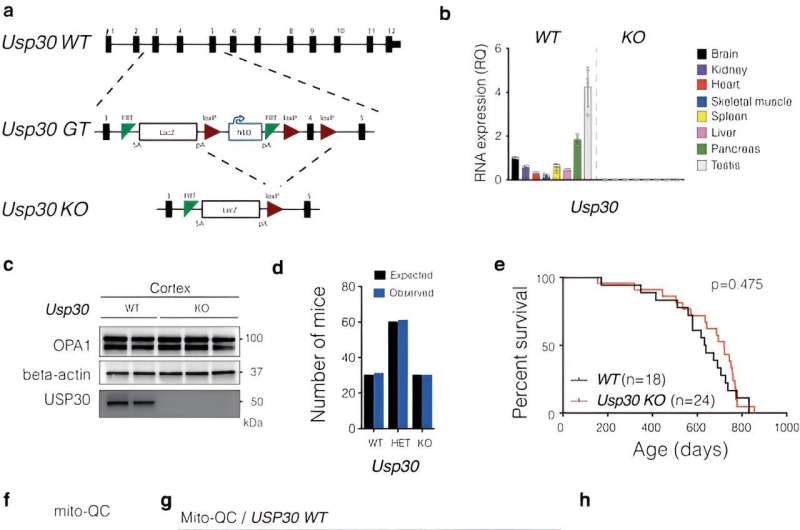This article has been reviewed according to Science X's editorial process and policies. Editors have highlighted the following attributes while ensuring the content's credibility:
fact-checked
peer-reviewed publication
trusted source
proofread
Researchers halt progression of Parkinson's disease in mouse model

In a new study, investigators at Beth Israel Deaconess Medical Center (BIDMC) have shed new light on key cellular processes involved in the progression of Parkinson's disease (PD). The research is published in the journal Nature Communications.
Affecting around 10 million people worldwide, Parkinson's disease is a neurodegenerative disorder caused by the progressive loss of the group of brain cells responsible for producing dopamine, a neurotransmitter that plays a critical role in regulating movement and coordination. As these neurons degenerate and dopamine levels decrease, individuals with Parkinson's disease experience a wide range of symptoms, including tremors, stiffness and difficulties with balance and coordination.
Researchers in the lab of senior author David K. Simon, MD, Ph.D., director of the Parkinson's Disease & Movement Disorders Center at BIDMC, in collaboration with colleagues at the University of Cambridge and Mission Therapeutics, performed complementary experiments showing that inhibiting a specific enzyme in a mouse model protects the dopamine-producing neurons that are normally lost as PD progresses, effectively halting the progression of the disease.
The findings open the door to the development of novel therapeutics targeting the enzyme that may slow or prevent the progression of Parkinson's disease in people—a major unmet need.
"Our lab is focused on working out the origins of Parkinson's disease and it is our hope that—one day—we will be able to slow down or even prevent disease progression in patients," said first author Tracy-Shi Zhang Fang, Ph.D., an instructor in Simon's lab. "The current study's findings pave the way toward that future."
Evidence suggests the dopamine-producing cells die off in Parkinson's disease because something has gone awry with the clearance of the cells' old and dysfunctional mitochondria—organelles that are the source of cells' energy, sometimes called the powerhouse of the cell.
Simon and colleagues focused on an enzyme called USP30 which plays a role in this process. In a mouse model engineered to lack the gene that produces the enzyme—known as a "knockout model" because one specific gene has been deleted for the purposes of experimentation—the researchers observed that the loss of USP30 protected against the development of Parkinson's-like motor symptoms, increased clearance of damaged mitochondria in neurons, and protected against the loss of dopamine-producing neurons.
In a second set of experiments, the team validated the knockout studies using a proprietary molecule developed by Mission Therapeutics to block the enzyme's action in the dopamine-producing neurons. As in the knockout mice, inhibiting the enzyme's action increased clearance of dysfunctional mitochondria and protected dopamine-producing neurons.
"The two experimental strategies together are much more convincing than either alone," said Simon, who is also a professor of neurology at Harvard Medical School. "Together, our very significant findings support the idea that reducing USP30 warrants further testing for its potentially disease-modifying effects in PD."
More information: Tracy-Shi Zhang Fang et al, Knockout or inhibition of USP30 protects dopaminergic neurons in a Parkinson's disease mouse model, Nature Communications (2023). DOI: 10.1038/s41467-023-42876-1




















